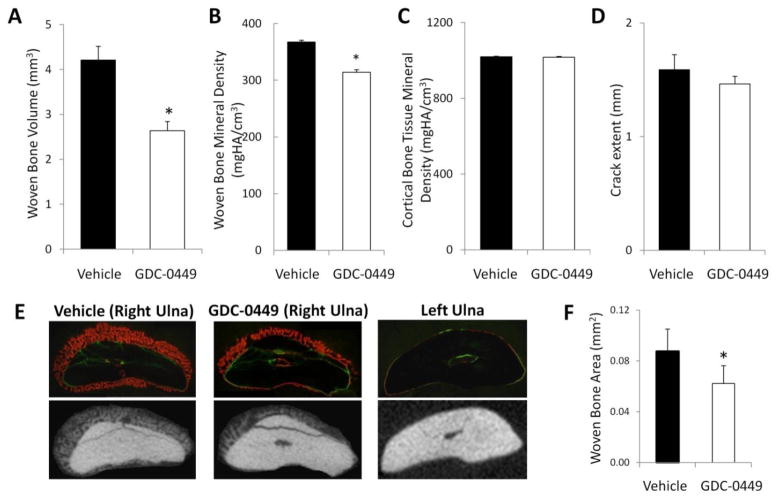Figure 2.
Hh inhibition impairs the healing response to loading-induced stress fracture by inhibiting woven bone formation and decreasing mineral content. (A) GDC-0449 decreased woven bone volume by 37% (p=0.0001) and (B) decreased woven bone BMD by 17% (p<0.0001). (C) GDC-0449 did not affect cortical TMD after 7d of treatment (p=0.84). (D) Analysis of the longitudinal crack extent revealed that forelimb loading produced similar levels of damage between vehicle and GDC-0449 groups (p=0.51). (E) Represented are dynamic histomorphometric and microCT images at 7d from the axial midpoint of the callus for the loaded right ulna (RU) for vehicle and GDC-0449 groups, and from the corresponding segment of non-loaded left ulna (LU). Dynamic histomorphometry revealed that at 7d, the callus was comprised predominantly of woven bone in both the vehicle and GDC-0449 groups. The non-loaded LU did not contain any woven bone. (F) GDC-0449 significantly decreased periosteal woven bone area by 29% at 7d, as determined by dynamic histomorphometric analysis of the fracture callus axial midpoint section (p=0.003). Data represents mean ± SEM. *p<0.05 vehicle vs GDC-0449. n=13–14 for microCT data, n=9–10 for dynamic histomorphometry.

